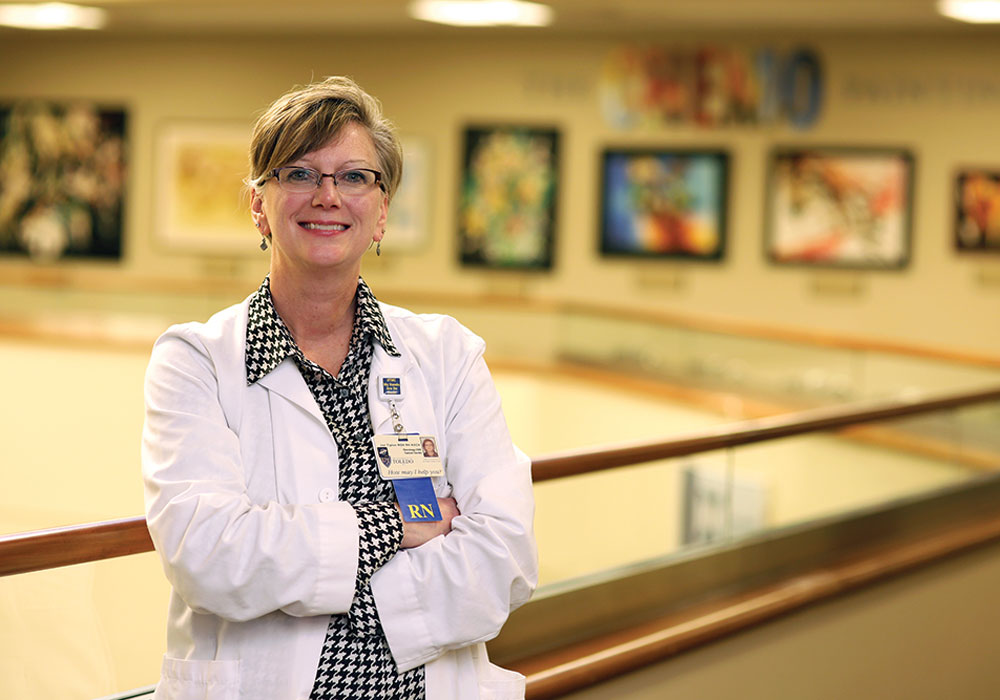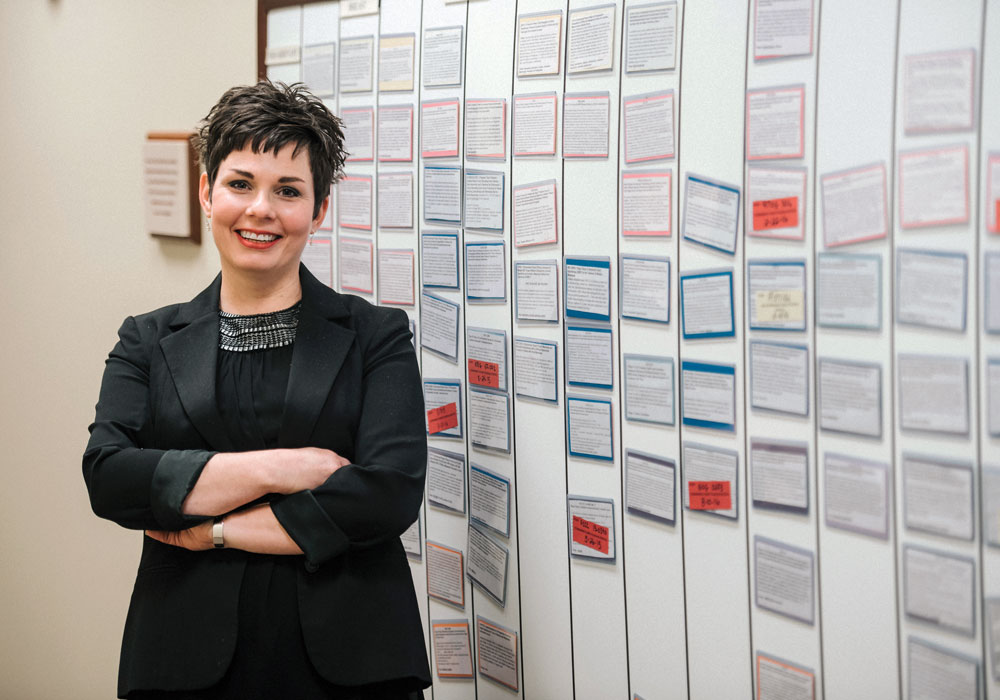How the Oncology Care Model Is Redefining Quality Care
Recognizing that more than 1.6 million new cancer diagnoses happen each year, the Centers for Medicare and Medicaid Services (CMS) developed a new delivery and payment system for practitioners treating patients with cancer. With a focus on quality care, smarter spending, and improving patients’ health, more than 190 pilot practices have adopted CMS’s innovative Oncology Care Model (OCM) (https://innovation.cms.gov/initiatives/Oncology-Care).

Focusing on Excellence
Even though providing quality cancer care is one of the most important priorities in any oncology institution, previous payment systems didn’t tailor reimbursement to encourage that. Most payment systems are aligned to a fee-for-service model. The OCM branches away from this by encouraging institutions to personalize care for each patient while ensuring that costs are still manageable. By using a performance-based payment system, clinicians select the most appropriate treatments depending on each patient’s individual needs.
ONS member Janelle Tipton, MSN, RN, AOCN®, infusion center manager at the University of Toledo Medical Center in Ohio—one of the 190 OCM pilot practices—knows that the new care model signifies a change.
“The OCM represents a shift in basing provider payments on the quality of care received, rather than quantity,” she says. “The achievement of improving the quality of care will be tied to financial incentives for performance, appropriateness of care, care coordination, and access for fee for service Medicare beneficiaries receiving chemotherapy.”
Rather than approaching treatment by painting in broad strokes, OCM treatment plans must be personalized and tailored to meet the needs of the patient. ONS member and OCM pilot participant LeAnn Rhinehart, MSN, APN, FNP-BC, director of advanced practitioners and OCM at Cancer Care Specialists in Decatur, IL, says, “OCM practices must meet six requirements. We must provide patients with 24/7 access to a clinician who has access to the patient’s medical records, employ an Office of the National Coordinator for Health Information Technology Health IT-certified electronic health record, collect data for continuous quality improvement, and provide core functions of patient navigation.”
Rhinehart continues, “We also must treat patients with therapies consistent with nationally recognized clinical guidelines and document a care plan that contains 13 elements outlined by the National Academy of Medicine’s report Delivering High-Quality Cancer Care: Charting a New Course for a System in Crisis.”
Switching to the OCM helps institutions provide quality care at a reasonable cost to patients and payers: it’s that simple. “The model aims to improve health outcomes and produce higher quality care at the same or lower cost to Medicare,” Tipton notes. “It forces us to look at how we provide care and use resources. If successful, it will likely pave the way for future care initiatives and reimbursement.”
Changing the Way Cancer Care Is Delivered
Although administrative issues like reimbursement models and payment systems may seem like they exist miles away in office buildings where printers whirl, fax machines hiss, and payments are processed and sent to insurers, the truth is nurses will be the first oncology professionals impacted after a switch to the OCM. Nurses will see greater care coordination (http://voice.ons.org/topic/care-coordination) and more in-depth, patient-centric procedures put in place.
“Nurses can expect more personalized care, enhanced telephone triage, and extended hours to keep patients from going to the ER or being admitted to a hospital,” Rhinehart says. “Beyond that, they might also see an enriched survivorship focus, streamlined oral oncolytic follow up and management, implementation and documentation of the 13-point care plan, and ongoing quality assessment and quality improvement projects that promote further innovation and ideas from staff.”
To improve care quality and coordination, practice redesign is inevitable.
“To improve care quality and coordination, practice redesign is inevitable,” Tipton says. “Nurses will likely recognize an increased awareness and understanding of the resources used in the care of Medicare beneficiaries receiving chemotherapy and be involved in taking a closer look at outcomes. Referral and utilization of all clinical support will be critical in providing the best-quality and fiscally responsible care. Projects will focus on opportunities and strategies for minimizing emergency department visits, hospitalizations, and barriers.”
Tipton outlines one of the changes she’s seen. “For example, our infusion center has implemented call backs to new patients receiving IV chemotherapy. The goal is to assess for symptoms, manage any problems proactively, and ensure that they have their medications and care plans in place.” Through this, Tipton says they hope to minimize preventable hospitalization, which can be costly financially, mentally, and physically to a patient.
Creating Quality Measure Tools
The OCM doesn’t just require institutions to commit to quality care, it requires them to prove it. Through quality measures, institutions are tracking their progress and offering their reports to CMS.
“We’re required to provide data to CMS for a set of quality metrics. This a laborious task for certain,” Rhinehart says. “There are inclusionary and exclusionary criteria for all metrics. Some measures are collected by CMS, while others must be reported by the practice.”
As part of the quest for quality, ONS has created a tool to assist OCM practices as they work to collect and report their quality measures. The Oncology Qualified Clinical Data Registry (https://www.medconcert.com/content/medconcert/ONSQIR/) assists institutions in creating, measuring, and reporting their improvements in a simple way that integrates with their current hospital systems.
The Future of the OCM
Currently, the OCM impacts Medicare beneficiaries along with 17 other private payers who have signed on to the pilot program. This makes up a small portion of the healthcare industry, but with proven success, the OCM could be adopted nationwide.
“Although planned for only five years, I believe this pilot will likely be implemented in the future. It is truly an organized way to examine care through quality outcomes and cost. I believe that other payers will likely follow this path for reimbursement,” Tipton says.

Rhinehart says she sees the need to act now, not just to improve care but to address issues with Medicare’s longevity. “If we want Medicare to be here for us and for our children, we must do something to ensure its survival. This is a step in the right direction. I may not agree with everything that we are required to do or to submit, but the overarching goal is viable. I also believe we will eventually become better at collaborating with our partners locally and across the nation through all of this.”
While the OCM has yet to be perfected, Tipton has hope for the future. “The OCM project is a process, mistakes will be made, and much is to be learned. For those involved in cancer care, it is an investment in the future. This is an opportunity to strengthen the good that we have, and to continually challenge us to improve our care. We can celebrate our successes, and learn from others.”
